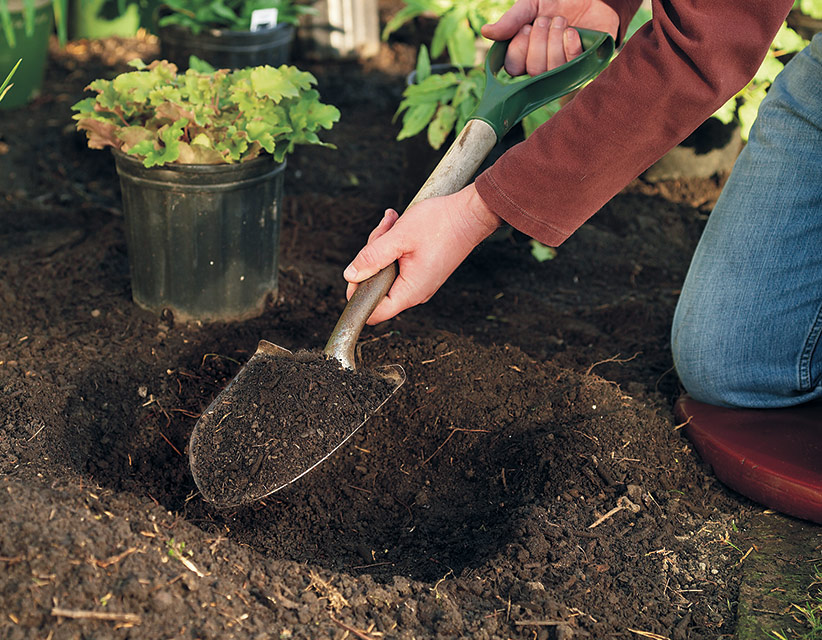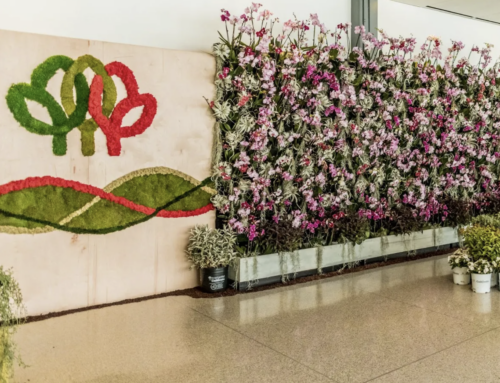
Prepare ground thoroughly, as some perennials will be there for years. Improve the soil with plenty of well-rotted organic matter or soil conditioner, remove large stones and clear all weeds, particularly the roots of perennial weeds.
Dig a hole slightly larger than the plants’ roots or pot, take off the pot and carefully unwind any roots that have spiraled around the rootball. Put the perennial in the ground so the top of the rootball is at soil level, backfill with soil, firm to remove any air pockets, and water thoroughly.
Caring for perennials

- In early spring, feed your perennials with a general slow-release fertilizer and mulch the bare soil between plants with well-rotted organic matter
- In spring or early summer, support tall-growing perennials with stakes such as canes and string, or grow-through plant supports placed over the clump
- Through spring and summer, keep the surrounding ground clear of weeds
- Remove dead and faded flowers to prolong the flowering season and to keep plants looking good
- In autumn, cut back fleshy-leaved perennials as soon as they die back, otherwise, the leaves go soggy and rot
- Woody-stemmed perennial growth can be left until late winter/spring before cutting back. Frost, mist, and snow transform parchment-colored stems into a winter wonderland, and during very cold winters, this growth also helps protect the roots from damage by severe frosts. Beneficial insects such as ladybirds hibernate in dead stems
- Tidy evergreen perennials from time to time to remove dead or tatty leaves and faded flower stems
- After three to five years, perennials tend to form large clumps and performance starts to decline. Lifting, dividing, and replanting them will rejuvenate plants and provide you with more plants to grow around the garden
How to propagate perennials

Perennials are superb for budget-conscious gardeners. Many can be raised cheaply from seed, then, once perennials have formed good-sized clumps, nearly all can be propagated by division, breaking up the clump into good-sized chunks to replant while discarding the old, woody center.
Advice on buying perennials
- Perennials are widely available at nurseries and garden centers, usually in at least two different pot sizes so you have the option of buying more costly plants for instant impact or smaller ones that take a year or two to grow
- Perennials can also be bought by mail order – the best time to buy is autumn to spring when plant growth is dormant, and they are more easily transported. Bare rooted plants are available whilst dormant, which avoids using plastic pots and is often cheaper
- Perennials can also be bought as plug plants, which are small and need growing on in pots before planting in the garden.
Article/information from Gardeners’ World




